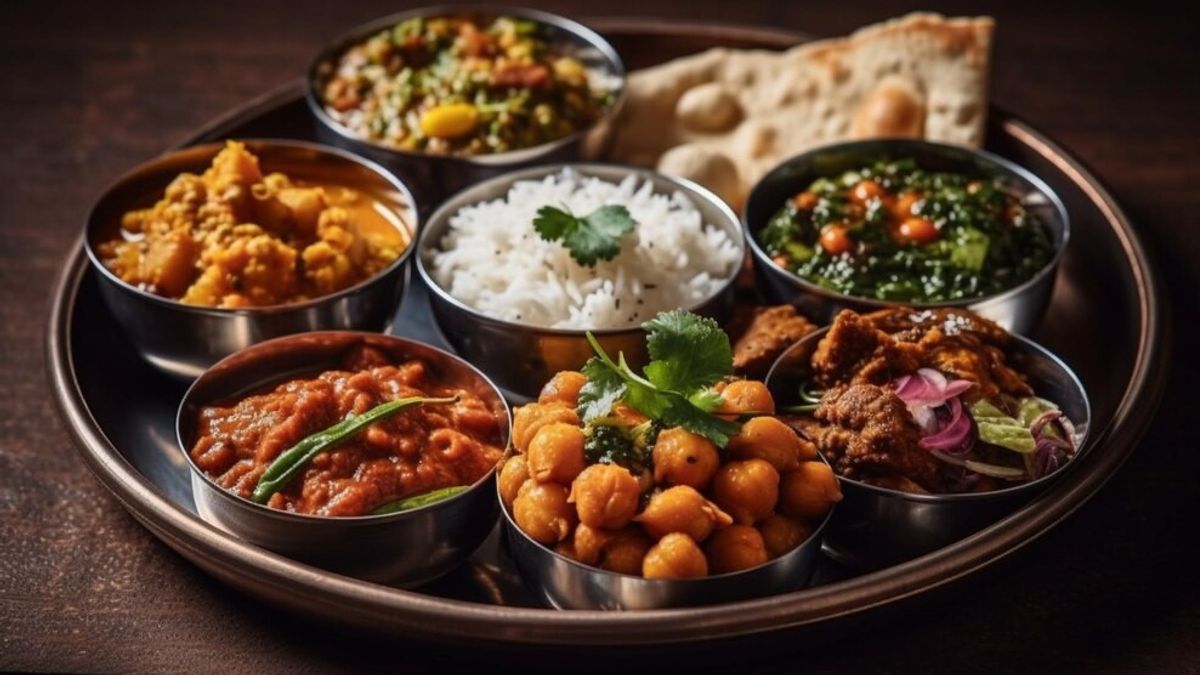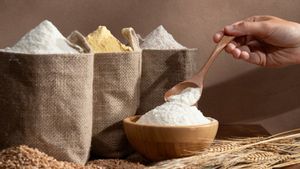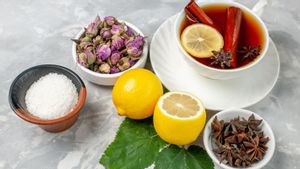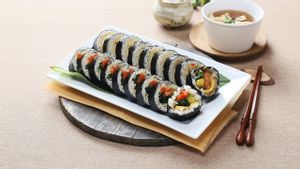YOGYAKARTA A dish, maybe has the same name but is mixed with various ingredients. Including one of them is curry, which has various kinds of variations in various countries. Already know what kinds of curry? In Japan, cari are also very popular, as well as in India and England. Then what are the characters of every kind of yellow-squeezed dish that is on average sharp with its savory taste?
Kari actually doesn't refer to just one ingredient. For example, there are curry leaves or concoctions that just put together a spice composition. According to Collen Sen in Curry's book: A Global History, curry refers to boiled meat, fish, and vegetables peppered with various spices. This includes curry as a seasoning or spice spice that is ready for use. The word cari, maybe referring to seasoning dishes, be it vegetables or meat.
In the 17th century, Portuguese roamed western India and interpreted cari as bumbuses' which later developed into caril or care in Portuguese and causing in English. Kari, estimated to have existed since 2500 BC in the region today called Pakistan. This dish is evolved and global. Launching TasteAtlas, Sunday, August 25, there are 112 kinds of curry in the world. But referring to Sen's book, there are dozens of kinds of curry from the following region that are historical.
In India, there are various kinds of curry. Chicken Curry sprinkled with yogurt and then roasted in tandoor oven, was created by a chef in New Delhi in 1948. After pantered with thick cream sauce from tomatoes, onions, and spices. In contrast to Vandaloo which is made from meat soaked in garlic and wine vinegar. This dish is red because it uses red chili ingredients with a mixture of spices. Not to mention the Korma made from yogurt, turmeric sauce, and peanut paste filled with lamb or goat meat. There is also lentil curry from Parsi and fish curry from West Bengal.
Kari in Japan usually has a light mixture of flavors with a thick texture. In a survey, Japanese people refer to cari rice as one of their three favorite dishes, Sen said.
In Japan, curry has a long history. It is thought that British officers and traders were introduced in the 1800s. According to records, cari and rice are ideal ways to put vegetables, carbohydrates and meat into one cheap and filling food. Most popular, in Japan is the kare kasus menu.
Kari is very popular in former British colonies, as well as in Jamaica, Saint Kitts and Nevis, Guyana, flaring, and Tobago. According to Sen's book, 1.5 million Indians migrated to other regions of the British Empire between 1834 and 1917, including 114,000 to feasibility and Tobago and 36,000 to Jamaica. The mass migration resulted in the entry of new cooking, ingredients and dishes techniques, including curry.
In the Caribbean region, cari dishes usually contain crabs, shrimp, ducks, beans, and potatoes. At the time of celebration, filled with lobsters. Well, what is typical is that the curry sauce contains a lot of jintan and is served with bread. At special events, goat curry is also served that is soft and fragrant. Processed with ingredients such as coconut milk, garlic, onions, allspice, timpi, chilies, tomatoes and a lot of turmeric for bright yellow rona.
Indian traders and Buddhist missionaries in the 4th century are expected to spread spices and spices throughout Southeast Asia. These include Javanese acid, garlic, onions, ginger, and lemongrass. Then in the 16th century the Portuguese introduced cayenne pepper. Over time, these ingredients are mixed into curry in Thailand which is typical of a fragrant and spicy taste.
In central to southern Thailand, on average, they process curry with coconut milk and typical of wet texture. Overall, the curry in Thailand is various colors, red, yellow, green. Everything forms a balance of flavors between sweet, sour, salty, and spicy. Three characteristics of curry in Thailand, dry beef curry with a very spicy taste, massar curry typical of peanut aroma, and panang curry with a soft and sweet taste.
In the 19th century, England established tea plantations, cinnamon, rubber, sugar, coffee, and tilapia on the island and brought in thousands of contract workers from Tamil Nadu [in southern India] to work on them, "explained Sen. In addition, the island is also home to the Sinhala, a ethnic group emigrated from northern India thousands of years ago.
Thanks to the influence of the Sinhala and southern India communities, curry comes in a variety of colors, from bright yellow to beige white, bright red, and dark brown. Although the taste varies widely, curry often uses ingredients such as coconut milk, Javanese acid, Maldives, green chilies, mustard seeds, ketumbar, and jinten. Among various types of cari, popular variations such as parippu (kari dhal), plain (kari nangka green), thick red mas kukul (kari hen), white chicken curry (usually made with aromatic cascades and pandan leaves) and ambul thiyal (kari fish acid).
In cooking, Pakistan is strongly influenced by Mughal. It is a Muslim dynasty that ruled India from the early 16th to the middle of the 18th century. Countries with the majority of Muslims tend to prepare dishes with beef, chicken, or fish as well as a lot of spices, such as nutmeg, jinten, turmeric, greeting leaves, capulaga, and black pepper.
Kari is very popular, with dozens of variations offered throughout Pakistan. Starting from slow cooked haleems (sheaths such as zinc from wheat, jeg, meat, lentil, and spices) to spicy kerai (made with garlic, spices, vinegar, tomatoes, and onions with goat or chicken meat), cari pare, saag (poured spinach), green curry, and daal chawal. A list of delicious foods known for this variety of curry, must be tried which are usually served with rice or bread.
In South Africa there is a very variety of curry. By combining cooking and acculturation traditions from the transfer of ethnic communities from Indonesia, Madagascar, and other ethnic Malay communities, then become a typical curry in South Africa. In this area, there are many chicken curry with additional tomatoes. There is also lamb curry with a soft texture.
SEE ALSO:
Chicken kari is spiced with Javanese acid water, kemiri, fresh turmeric, and belitcan are the hallmarks of cari in Malaysia. Here, processing a mix of Chinese cooking techniques and typical Malaysian ingredients. Including terasi, coconut milk, eastwood, fish soy sauce, citrus, turquoise, turmeric, and ginger. Sen also points to Malaysian chicken curry, which serves chicken slices that are stir in teration and then boiled in coconut milk, sharp Javanese acid, and fragrant cinnamon.
In South Korea, cari is said to have started to appear in dishes after World War II. Kari reproduced after a company called Ottogi produced ready-to-use curry powder and instantarized curry in the 1960s. Since then, Sen has said cari rice with beef mouths, carrots, potatoes, and onions and tteokbokki curry with soups such as mouth-to-cheats (rice cakes), fish cakes, vegetables, and eggs, both of which have become the most popular home foods.
Like in Malaysia, cari in Indonesia combines how to cook in the style of India, China, the Middle East, and the availability of ingredients in the archipelago. In Indonesia, there are many types of curry. Starting from containing goat meat, which is eventually known as sugar, with a slightly spicy taste. Chicken Curry, used to be served with rendang in packets of Padang rice. Chicken Curry is also a typical dish on big days, such as Eid.
Those are all kinds of global caridies. Have you tasted cari dishes from which area?
The English, Chinese, Japanese, Arabic, and French versions are automatically generated by the AI. So there may still be inaccuracies in translating, please always see Indonesian as our main language. (system supported by DigitalSiber.id)

















